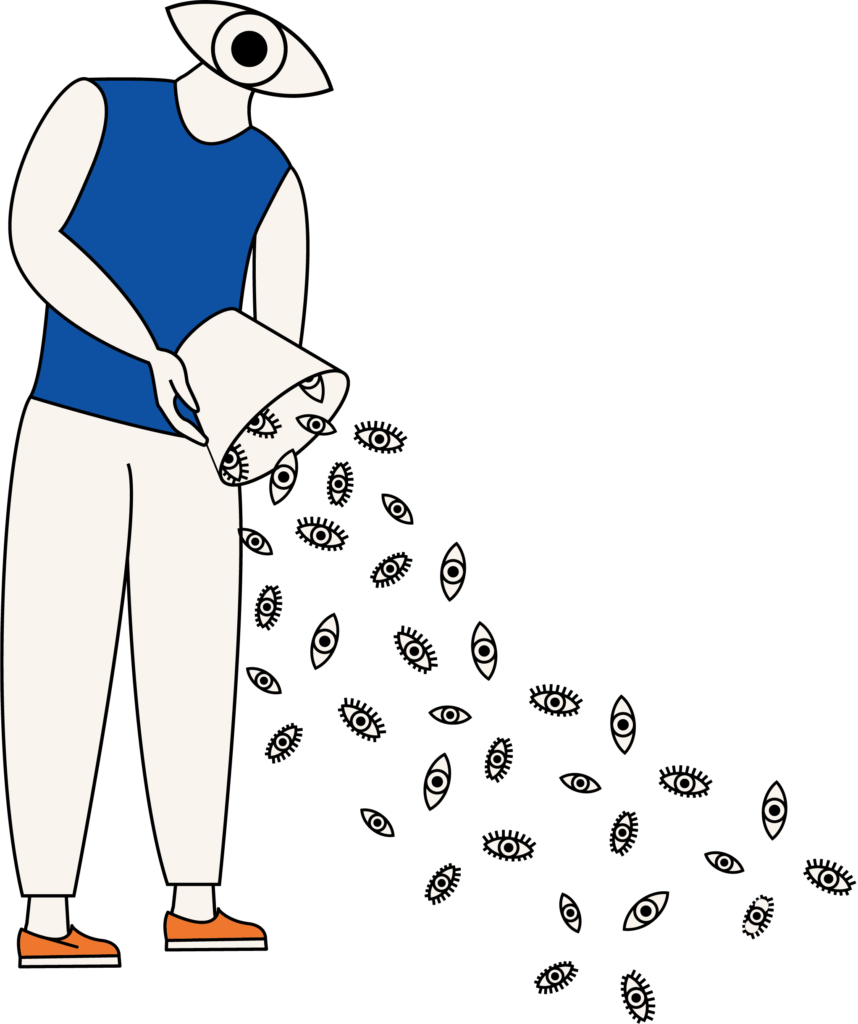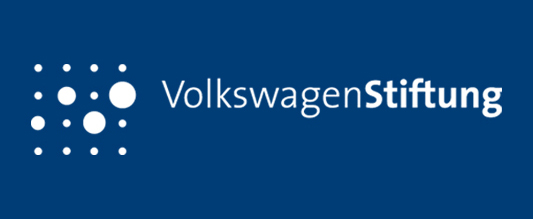Work Packages
Our project addresses the growing polarization in European societies. It will examine inclusivity norms, which are social group norms that promote tolerance and the willingness to interact and collaborate with opposing groups. Our innovative interdisciplinary approach will provide a unique view of how inclusivity norms in polarized settings are transmitted, how they can effectively reduce conflicts between opposing groups, and how they can be promoted.
Cross-national survey
PIs: coordinated by Prof. Dr. Christ; involving all other PIs and Early Career Researchers
WP1 will be the first critical step for the project, providing fundamental insights needed for all other WPs. We will conduct a large cross-national survey (16 European countries1 covering all EU regions plus UK; using representative samples of N=1,000 per country, covering ages 14-75) to examine (a) the relation between inclusivity norms and different attitudes and behaviors (e.g., tolerance, willingness to collaborate), (b) the most effective (combination of) ingredients of inclusivity norms (e.g., mutual respect plus dialogue plus unity), (c) sources of normative information (e.g., social network sources, institutional signals), (d) boundary conditions (i.e., individual, situational, social network, and contextual moderators) for the effectiveness of such norms, and (e) to test the invariance of the effects and ingredients of inclusivity norms across European countries. The web survey (20 minutes) will be conducted by multinational survey companies and include short measures for all central variables. Moreover, available objective data on the country level will further inform our cross-country comparison. These include indicators of the economic situation, living standards, inequality (e.g., [Inequality-adjusted] Human Development Index), and indices concerned with the state of democracy (Democracy Index) or tolerant versus intolerant migrant integration policies (Migration Integration Policy Index).
learn more about work package 1
PIs: coordinated by Prof. Dr. Christ; involving all other PIs and Early Career Researchers
WP1 will be the first critical step for the project, providing fundamental insights needed for all other WPs. We will conduct a large cross-national survey (16 European countries1 covering all EU regions plus UK; using representative samples of N=1,000 per country, covering ages 14-75) to examine (a) the relation between inclusivity norms and different attitudes and behaviors (e.g., tolerance, willingness to collaborate), (b) the most effective (combination of) ingredients of inclusivity norms (e.g., mutual respect plus dialogue plus unity), (c) sources of normative information (e.g., social network sources, institutional signals), (d) boundary conditions (i.e., individual, situational, social network, and contextual moderators) for the effectiveness of such norms, and (e) to test the invariance of the effects and ingredients of inclusivity norms across European countries. The web survey (20 minutes) will be conducted by multinational survey companies and include short measures for all central variables. Moreover, available objective data on the country level will further inform our cross-country comparison. These include indicators of the economic situation, living standards, inequality (e.g., [Inequality-adjusted] Human Development Index), and indices concerned with the state of democracy (Democracy Index) or tolerant versus intolerant migrant integration policies (Migration Integration Policy Index).
learn more about work package 1
Experiments with inclusivity norms
PIs: Prof. Dr. Bukowski and Prof. Dr. Christ
WP2 aims to test RQ1 in a controlled, experimental setting. While WP1 examines the association between perceived inclusivity norms and different outcome measures, experimental studies allow us to test the causal effect of inclusivity norms. WP2 also tests the most effective way to change social norm perceptions and examines individual and situational characteristics that inhibit or boost the effectiveness of inclusivity norms. WP2 develops three lines of studies that build upon each other. Altogether, we plan two correlational pilot studies and ten experimental studies. All studies will be pre-registered. Sample sizes of the experiments were predetermined using priori power analyses (medium effect size f = .25; α = .05; 1-β = .90). In the first line of studies, we will run two correlational pilot studies (studies 1a and 1b; N = 500 each) – one in Hagen and the other in Krakow to replicate the results – that will inform the design of the experimental manipulations of inclusivity norms, adapted to the intergroup context in Germany and Poland. Since WP1 cannot include detailed measures due to response time restrictions, these studies offer the opportunity to use elaborate, multiple-item measures for perceived (descriptive and injunctive) inclusivity norms and key outcomes (e.g., social perceptions of outgroups, tolerance, willingness to collaborate). Moreover, we will add other variables, including individual-level moderators such as sense of personal and socio-political control and need for cognitive closure. Based on the results of WP1 and these two pilots, we will design and pretest the experimental studies in Lines 2 and 3. We plan to use carefully constructed, realistic vignettes to manipulate perceived inclusivity norms). learn more about work package 2
PIs: Prof. Dr. Bukowski and Prof. Dr. Christ
WP2 aims to test RQ1 in a controlled, experimental setting. While WP1 examines the association between perceived inclusivity norms and different outcome measures, experimental studies allow us to test the causal effect of inclusivity norms. WP2 also tests the most effective way to change social norm perceptions and examines individual and situational characteristics that inhibit or boost the effectiveness of inclusivity norms. WP2 develops three lines of studies that build upon each other. Altogether, we plan two correlational pilot studies and ten experimental studies. All studies will be pre-registered. Sample sizes of the experiments were predetermined using priori power analyses (medium effect size f = .25; α = .05; 1-β = .90). In the first line of studies, we will run two correlational pilot studies (studies 1a and 1b; N = 500 each) – one in Hagen and the other in Krakow to replicate the results – that will inform the design of the experimental manipulations of inclusivity norms, adapted to the intergroup context in Germany and Poland. Since WP1 cannot include detailed measures due to response time restrictions, these studies offer the opportunity to use elaborate, multiple-item measures for perceived (descriptive and injunctive) inclusivity norms and key outcomes (e.g., social perceptions of outgroups, tolerance, willingness to collaborate). Moreover, we will add other variables, including individual-level moderators such as sense of personal and socio-political control and need for cognitive closure. Based on the results of WP1 and these two pilots, we will design and pretest the experimental studies in Lines 2 and 3. We plan to use carefully constructed, realistic vignettes to manipulate perceived inclusivity norms). learn more about work package 2
Personal network analysis
PI: Prof. Dr. Lubbers
While research on interpersonal influence typically studies single settings (e.g., bounded groups such as schools), individuals participate in numerous settings in daily life (e.g., work, family, neighborhood, friends, children’s schools), where they interact with people of their own and other social groups. Consequently, each individual has a unique interpersonal environment (personal network), composed of their interaction partners. These relationships vary in strength, role, duration, and similarity in ethnicity or political orientation, jointly exerting a complex social influence on them. While evidence shows that people with outgroup members in their personal networks have more positive attitudes toward that group, it is unclear how relationship characteristics and network positions moderate this influence. Furthermore, there is no evidence on the perceptions and spread of inclusivity norms in personal networks. WP3 addresses these gaps. The polarization regarding Catalonia’s independence of Spain provides us with an excellent case to study this. About half of Catalonia’s population favors independence, the other half not, dividing families, friendships, and communities. The gap has deepened over time and repeatedly leads to escalation. How do people adopt, negotiate, or abandon inclusivity norms while managing these ideological differences in their networks? Which relationships affect individuals’ perceptions of inclusivity norms most? Which network constellations favor conformity, internalization, and active enforcement of inclusivity norms? To answer these questions, WP3 adopts a sequential mixed-methods design, where personal network analysis and semi-structured interviews are conducted in (qualitative) Stage 1 and cultural consensus analysis in (quantitative) Stage 2. For Stage 1, we draw a small sample of citizens in Catalonia (N=75; 60 adult citizens and 15 community leaders), following qualitative research principles (i.e., the sample is designed to be theoretically meaningful rather than statistically representative). The sample is stratified into people who clearly identify as (1) independentists and (2) remainers, each having participated in protests or mobilizations, and people with (3) more neutral, mixed, or changing positions. In each category, we seek diversity in sociodemographic characteristics. To delineate participants’ networks, we use a political discussion name generator, asking with whom participants discuss Catalan independence, and a socialization name generator, asking who are important in participants’ lives, whether or not participants discuss politics with them. We then ask about the type and strength of each nominated relationship, respondents’ perceptions of network members’ conformity to inclusivity norms and of their opinions regarding Catalan independence. Semi-structured interviewing complements the networks to explore temporal processes of norm perception and adoption, political discussion with ideologically similar and dissimilar others, opinions about independence, and the envisioned future society. The interviews are tape-recorded, transcribed, and coded from a grounded-theory perspective with the software NVIVO, focusing on detecting causal links between networks and norms. Networks are visualized with the software Visone. In Stage 2, a cultural consensus web survey is administered to a randomized panel of Catalonia’s population above the age of 14 (N=1,000; lower age limit chosen in connection with WP5). Cultural consensus analysis (CCA) studies a community’s agreement about cultural norms or values. First, in-depth knowledge is gained from community members about a cultural domain, here in Stage 1. Then, a series of items is constructed and implemented in a survey reflecting, in this case, inclusivity norms, practices to manage ideological differences in networks, and values regarding the envisioned future. Respondents are asked which items reflect the norms they perceive in their environments, rather than their own adherence. The survey also collects data about respondents’ attributes (e.g., age, political orientation) and networks. Based on the survey responses, CCA detects (1) whether the community has general consensus about norms and values, or consists of subgroups adhering to distinct norms, (2) which norms generate the most/least consensus, and (3) which individuals perceive the norms most/least accurately. Predictors are individual and network variables. CCA can thus detect issues that foster/inhibit consensus between and within ideological groups and assesses polarization more realistically than binary media imaginaries.
learn more about work package 3
PI: Prof. Dr. Lubbers
While research on interpersonal influence typically studies single settings (e.g., bounded groups such as schools), individuals participate in numerous settings in daily life (e.g., work, family, neighborhood, friends, children’s schools), where they interact with people of their own and other social groups. Consequently, each individual has a unique interpersonal environment (personal network), composed of their interaction partners. These relationships vary in strength, role, duration, and similarity in ethnicity or political orientation, jointly exerting a complex social influence on them. While evidence shows that people with outgroup members in their personal networks have more positive attitudes toward that group, it is unclear how relationship characteristics and network positions moderate this influence. Furthermore, there is no evidence on the perceptions and spread of inclusivity norms in personal networks. WP3 addresses these gaps. The polarization regarding Catalonia’s independence of Spain provides us with an excellent case to study this. About half of Catalonia’s population favors independence, the other half not, dividing families, friendships, and communities. The gap has deepened over time and repeatedly leads to escalation. How do people adopt, negotiate, or abandon inclusivity norms while managing these ideological differences in their networks? Which relationships affect individuals’ perceptions of inclusivity norms most? Which network constellations favor conformity, internalization, and active enforcement of inclusivity norms? To answer these questions, WP3 adopts a sequential mixed-methods design, where personal network analysis and semi-structured interviews are conducted in (qualitative) Stage 1 and cultural consensus analysis in (quantitative) Stage 2. For Stage 1, we draw a small sample of citizens in Catalonia (N=75; 60 adult citizens and 15 community leaders), following qualitative research principles (i.e., the sample is designed to be theoretically meaningful rather than statistically representative). The sample is stratified into people who clearly identify as (1) independentists and (2) remainers, each having participated in protests or mobilizations, and people with (3) more neutral, mixed, or changing positions. In each category, we seek diversity in sociodemographic characteristics. To delineate participants’ networks, we use a political discussion name generator, asking with whom participants discuss Catalan independence, and a socialization name generator, asking who are important in participants’ lives, whether or not participants discuss politics with them. We then ask about the type and strength of each nominated relationship, respondents’ perceptions of network members’ conformity to inclusivity norms and of their opinions regarding Catalan independence. Semi-structured interviewing complements the networks to explore temporal processes of norm perception and adoption, political discussion with ideologically similar and dissimilar others, opinions about independence, and the envisioned future society. The interviews are tape-recorded, transcribed, and coded from a grounded-theory perspective with the software NVIVO, focusing on detecting causal links between networks and norms. Networks are visualized with the software Visone. In Stage 2, a cultural consensus web survey is administered to a randomized panel of Catalonia’s population above the age of 14 (N=1,000; lower age limit chosen in connection with WP5). Cultural consensus analysis (CCA) studies a community’s agreement about cultural norms or values. First, in-depth knowledge is gained from community members about a cultural domain, here in Stage 1. Then, a series of items is constructed and implemented in a survey reflecting, in this case, inclusivity norms, practices to manage ideological differences in networks, and values regarding the envisioned future. Respondents are asked which items reflect the norms they perceive in their environments, rather than their own adherence. The survey also collects data about respondents’ attributes (e.g., age, political orientation) and networks. Based on the survey responses, CCA detects (1) whether the community has general consensus about norms and values, or consists of subgroups adhering to distinct norms, (2) which norms generate the most/least consensus, and (3) which individuals perceive the norms most/least accurately. Predictors are individual and network variables. CCA can thus detect issues that foster/inhibit consensus between and within ideological groups and assesses polarization more realistically than binary media imaginaries.
learn more about work package 3
Network experiments
PI: Prof. Dr. Jaspers
WP4 employs an experimental approach inspired by so-called intergroup chicken games, to test how inclusivity norms can spread in polarized networks. The modelling strategy is threefold: 1. simulations; 2. testing of various within group structures; 3. testing of various between-group structures. We will start with a series of Agent-Based Models (ABMs) in which we vary centralities (e.g., high eigenvector vs high degree centrality) as well as connections (clustering) between two opposing groups, to determine the theoretical reach of our norm interventions. These models will help us develop hypotheses and determine the structures for the following experiments. Network simulations do not always capture the complex interdependencies of real-life networks, but they inform us about the most promising avenues for lab experiments. Next, we will impose various network structures in a first series of laboratory experiments to spread the new norm. Two groups will be competing in a specifically designed game over a collective good. The new inclusivity norm will be introduced as an incentive to collaborate with the other team, rather than compete, but only if the innovator(s) manage(s) to get the majority of both groups to collaborate. We test for instance whether a star-like structured network would quickly spread the new norm, arguing that the most central actors can carry innovation the furthest (social referent approach). Centola posits that whereas information or disease may spread via highly connected ‘influencers’, individuals only adopt new behaviors (in this case: norms) after having been exposed to them through multiple social contacts. The mechanism underlying this regularity is social reinforcement. Adoption of new complex behaviors imposes strain on actors, both because they have to replace psychologically embedded behaviors, and because they risk non-conformity to the group. Non-conformity implies social sanctions, such as ridicule or social exclusion. When multiple socially linked others signal their conformity of the behavior to the individual, they will adjust their cost/benefit consideration for adoption of the behavior and will often ultimately do so. Should inclusivity norms diffuse via this mechanism, one would expect a clustered network with many relationships to facilitate the most effective spread. We will thus evaluate both the social referent and complex contagion strategies for the spread of inclusivity norms. Polarized networks might additionally spread norms differently. Barriers to the spread of norms can be found when the network contains small cliques or network positions that block the dissemination. Social referents with high standings across both groups potentially overcome these barriers, or low-level individuals with some ties at least to the other group are better able to successfully introduce inclusivity norms from the fringes. In a second series of experiments, we therefore intend to limit and vary with whom in both their own and the other group individuals can communicate. We will introduce inclusivity norms when there is no contact between the groups; when few people can communicate with one other person from the opposing group; and when one individual can communicate with many others of the other group. By varying the structure of intergroup communication, we can determine which structure spreads inclusivity norms best and furthest. The exact number of participants needed for these experiments is determined after the simulations, as some network structures require more network members than others. Participants will be recruited online, and via the sociology lab at Utrecht University. Combined, these simulations and experiments will identify which target individuals are most successful in spreading inclusivity norms and under which within- and between-group structures.
learn more about work package 4
PI: Prof. Dr. Jaspers
WP4 employs an experimental approach inspired by so-called intergroup chicken games, to test how inclusivity norms can spread in polarized networks. The modelling strategy is threefold: 1. simulations; 2. testing of various within group structures; 3. testing of various between-group structures. We will start with a series of Agent-Based Models (ABMs) in which we vary centralities (e.g., high eigenvector vs high degree centrality) as well as connections (clustering) between two opposing groups, to determine the theoretical reach of our norm interventions. These models will help us develop hypotheses and determine the structures for the following experiments. Network simulations do not always capture the complex interdependencies of real-life networks, but they inform us about the most promising avenues for lab experiments. Next, we will impose various network structures in a first series of laboratory experiments to spread the new norm. Two groups will be competing in a specifically designed game over a collective good. The new inclusivity norm will be introduced as an incentive to collaborate with the other team, rather than compete, but only if the innovator(s) manage(s) to get the majority of both groups to collaborate. We test for instance whether a star-like structured network would quickly spread the new norm, arguing that the most central actors can carry innovation the furthest (social referent approach). Centola posits that whereas information or disease may spread via highly connected ‘influencers’, individuals only adopt new behaviors (in this case: norms) after having been exposed to them through multiple social contacts. The mechanism underlying this regularity is social reinforcement. Adoption of new complex behaviors imposes strain on actors, both because they have to replace psychologically embedded behaviors, and because they risk non-conformity to the group. Non-conformity implies social sanctions, such as ridicule or social exclusion. When multiple socially linked others signal their conformity of the behavior to the individual, they will adjust their cost/benefit consideration for adoption of the behavior and will often ultimately do so. Should inclusivity norms diffuse via this mechanism, one would expect a clustered network with many relationships to facilitate the most effective spread. We will thus evaluate both the social referent and complex contagion strategies for the spread of inclusivity norms. Polarized networks might additionally spread norms differently. Barriers to the spread of norms can be found when the network contains small cliques or network positions that block the dissemination. Social referents with high standings across both groups potentially overcome these barriers, or low-level individuals with some ties at least to the other group are better able to successfully introduce inclusivity norms from the fringes. In a second series of experiments, we therefore intend to limit and vary with whom in both their own and the other group individuals can communicate. We will introduce inclusivity norms when there is no contact between the groups; when few people can communicate with one other person from the opposing group; and when one individual can communicate with many others of the other group. By varying the structure of intergroup communication, we can determine which structure spreads inclusivity norms best and furthest. The exact number of participants needed for these experiments is determined after the simulations, as some network structures require more network members than others. Participants will be recruited online, and via the sociology lab at Utrecht University. Combined, these simulations and experiments will identify which target individuals are most successful in spreading inclusivity norms and under which within- and between-group structures.
learn more about work package 4
Network intervention – „Together for tolerance“
PI: Prof. Dr. van Zalk
WP5 will introduce inclusivity norms in the field. Previous research has shown that especially social referents (e.g., adolescents with most friendship nominations from others) can strongly influence norm changes in adolescence. Our network intervention focuses on middle adolescence (i.e., 14–16-year-olds), which is characterized by salient developmental changes in peer relationships, and by a peak in susceptibility to peer group norms in schools. Prior interventions show that training social referents in this age group to spread anti-conflict norms resulted in greater school-wide adherence to adolescent anti-conflict norms and reductions of interpersonal conflict. However, no prior studies have examined to what degree training social referents is effective for spreading inclusivity norms in school networks. In WP5, inclusivity norms will be promoted through such a school-based network intervention. Our intervention will combine social referent approaches and social reinforcement by targeting influential groups of individuals and training them to exert long-term influence on inclusivity norms. Each intervention group will be trained to develop strategies and will be provided materials and platforms (e.g., a dedicated website) to implement specific measures, activities, or campaigns in their school that promote inclusivity norms. In middle adolescence, this participatory approach in interventions is important as it accommodates youths’ developmental needs for autonomy, respect, and status. The intervention’s effectiveness will be evaluated in a four-wave experimental network study (with five randomized conditions), with two pre-tests and two post-tests. We will invite five schools for participation at all four waves and implement the intervention randomly in four schools, with one remaining school as control group. At each wave, network data will be collected in all five schools. The procedure is as follows: within each school, all 8th to 10th graders are invited to participate at each wave, and to fill out network nominations on a range of network attributes (e.g., friendships, popularity, visibility; cf.). Using the two pre-tests of these network data, we will identify four pools of adolescent participants in each school: (1) social referents with high standings in the entire network; (2) social referents with low standings, yet many connections to the fringes; (3) friendship cliques with high interconnections (e.g., mutual friends); and (4) friendship cliques with low interconnections, yet many connections to the fringes. Next, four schools are randomly assigned to the four intervention conditions, exclusively targeting one of the four pools of adolescents (capped at n=60 for feasibility). This allows us to evaluate both the complex contagion and social referent strategies for the spread of inclusivity norms. The use of longitudinal pre-test data is important to select adolescents and cliques who remain most stable in their network positions (as they are assumed to have more influence). We will use two post-tests to examine immediate and lagged intervention effects. Specifically, we will examine to what degree the intervention results in the spreading of perceived inclusivity norms in networks, which, in turn, improves tolerance, collaboration, and contact willingness between ethnic, religious, and other groups. Through our ongoing collaboration with the Landespräventionsrat Niedersachsen and the Verein Niedersächsische Bildungsinitiativen, we will first screen 8th to 10th graders with surveys on risk factors for adolescent polarization (e.g., relative deprivation, divergent political attitudes, intergroup conflict, group discrimination). We will then select five schools that score high on these risk factors (a total of N ≈ 750). An a priori power analysis (medium effect size f = .25; α = .05; 1-β = .90; four waves, five conditions) showed we need minimally n=390. Based on our own and others’ prior studies with similar designs, we anticipate a minimum response rate of 60% (n ≈ 450).
learn more about work package 5
PI: Prof. Dr. van Zalk
WP5 will introduce inclusivity norms in the field. Previous research has shown that especially social referents (e.g., adolescents with most friendship nominations from others) can strongly influence norm changes in adolescence. Our network intervention focuses on middle adolescence (i.e., 14–16-year-olds), which is characterized by salient developmental changes in peer relationships, and by a peak in susceptibility to peer group norms in schools. Prior interventions show that training social referents in this age group to spread anti-conflict norms resulted in greater school-wide adherence to adolescent anti-conflict norms and reductions of interpersonal conflict. However, no prior studies have examined to what degree training social referents is effective for spreading inclusivity norms in school networks. In WP5, inclusivity norms will be promoted through such a school-based network intervention. Our intervention will combine social referent approaches and social reinforcement by targeting influential groups of individuals and training them to exert long-term influence on inclusivity norms. Each intervention group will be trained to develop strategies and will be provided materials and platforms (e.g., a dedicated website) to implement specific measures, activities, or campaigns in their school that promote inclusivity norms. In middle adolescence, this participatory approach in interventions is important as it accommodates youths’ developmental needs for autonomy, respect, and status. The intervention’s effectiveness will be evaluated in a four-wave experimental network study (with five randomized conditions), with two pre-tests and two post-tests. We will invite five schools for participation at all four waves and implement the intervention randomly in four schools, with one remaining school as control group. At each wave, network data will be collected in all five schools. The procedure is as follows: within each school, all 8th to 10th graders are invited to participate at each wave, and to fill out network nominations on a range of network attributes (e.g., friendships, popularity, visibility; cf.). Using the two pre-tests of these network data, we will identify four pools of adolescent participants in each school: (1) social referents with high standings in the entire network; (2) social referents with low standings, yet many connections to the fringes; (3) friendship cliques with high interconnections (e.g., mutual friends); and (4) friendship cliques with low interconnections, yet many connections to the fringes. Next, four schools are randomly assigned to the four intervention conditions, exclusively targeting one of the four pools of adolescents (capped at n=60 for feasibility). This allows us to evaluate both the complex contagion and social referent strategies for the spread of inclusivity norms. The use of longitudinal pre-test data is important to select adolescents and cliques who remain most stable in their network positions (as they are assumed to have more influence). We will use two post-tests to examine immediate and lagged intervention effects. Specifically, we will examine to what degree the intervention results in the spreading of perceived inclusivity norms in networks, which, in turn, improves tolerance, collaboration, and contact willingness between ethnic, religious, and other groups. Through our ongoing collaboration with the Landespräventionsrat Niedersachsen and the Verein Niedersächsische Bildungsinitiativen, we will first screen 8th to 10th graders with surveys on risk factors for adolescent polarization (e.g., relative deprivation, divergent political attitudes, intergroup conflict, group discrimination). We will then select five schools that score high on these risk factors (a total of N ≈ 750). An a priori power analysis (medium effect size f = .25; α = .05; 1-β = .90; four waves, five conditions) showed we need minimally n=390. Based on our own and others’ prior studies with similar designs, we anticipate a minimum response rate of 60% (n ≈ 450).
learn more about work package 5







